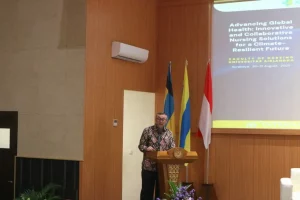It is undeniable that the environment has been undergoing drastic changes since the mid-1990s and the situation has further escalated worldwide. To effectively combat the impact of climate change, various robust and strategic measures are being proposed and implemented at different levels (Tiep et al. 2021). The financial sector can play a significant role in the fight against global warming by supporting risk reductions related to climate change and mitigating the effects of unfavorable climate events. The Paris Agreement is a global agreement to tackle climate change, including targets, mitigation, adaptation, loss, damage, finance, technology, capacity building, and transparency (Salman et al. 2022). Its long-term goal is to limit the global mean temperature increase to below 2 °C over the pre-industrial period, with efforts to limit the increase to 1.5 °C (Iacobuţă et al. 2022). Additionally, the agreement seeks to achieve net zero greenhouse gas emissions in the second half of the twenty-first century by reducing man-made carbon emissions to a level that can be absorbed by forests and oceans after 2050 (Musah et al. 2023). To achieve these goals, the role of green finance has become increasingly important.
Green finance refers to economic activities that support environmental enhancement, response to climate change, and the efficient use of resources (Qin et al. 2022). Green financing can take many forms, including green bonds, loans, mortgages, and other financial products designed to support sustainable projects. Green bonds, for example, are a type of fixed-income security that raises funds for projects with positive environmental benefits. On the other hand, green loans are loans explicitly provided for green projects or activities (Hadaś-Dyduch et al. 2022). Green financing aims to promote the growth of sustainable industries and stimulate the development of new technologies and practices that can help reduce carbon emissions and mitigate the impact of climate change (Park and Kim 2020). Besides offering financial benefits for investors, green financing can positively impact the environment and foster the creation of a more sustainable global economy (Sachs et al. 2019). These activities are closely related to the Paris Agreement goals, and countries worldwide are developing green finance to achieve them.
Therefore, green finance is essential in achieving the Paris Climate Agreement goals and is a meaningful study that has not been comprehensively explored in the existing literature. Central banks and other regulators are modifying their frameworks and procedures from a governance standpoint in response to the complex risks posed by climate change. This includes methods to enhance climate risk disclosure and classification standards, which will aid financial institutions, investors, and regulators in better assessing their exposures to climate risks, which include green financing (Demekas and Grippa 2021).
By supporting sustainable projects, green financing can create a more sustainable and resilient future for everyone. Both the private and public sectors need to implement strong policies to mitigate these risks while exploiting the economic opportunities that arise from solutions to these problems (Kaminker and Majowski 2018). Nevertheless, as with any financing, questions can arise with green financing (Chiu et al. 2022), which include a lack of clarity and consistency in the definitions of what constitutes a “green” project or investment, which leads to legal issues and enforcement compliance.
This paper examines the role of green finance in achieving Paris Agreement goals. It analyses the challenges of implementing green financing in Malaysia and the legal consequences of non-compliance. A comparative study with Indonesia is conducted to assess Malaysia’s compliance with the Paris Agreement in the context of green financing.
To tackle the concerns raised and fulfill the requirements of the Paris Agreement, various mechanisms have been suggested to establish a stronger and more efficient regulatory framework for green financing and sustainability. This will aid the shift toward a more ecologically sustainable economy.
Malaysia has made progress in promoting green financing policies, but several implementation challenges remain. One of the key challenges facing the implementation of green financing in Malaysia is the lack of clarity and consistency in the definitions of what constitutes a “green” project or investment. While there are guidelines and principles for sustainable financing, there is no clear definition of a “green” project or investment, leading to potential confusion and uncertainty among investors and financial institutions (Martin et al. 2021).
Policies and regulations concerning green financing remain a developing and ongoing process for financial sectors in Indonesia. Since green financing is still relatively new in Indonesia, a comprehensive regulatory framework has yet to be made. As there is a lack of Regulation concerning green financing, an established, cohesive definition and standards illustrate the extent of green financing in Indonesia. As a result, financial institutions use the term green financing without providing a regulatory basis that can be used by relevant stakeholders, particularly investors and issuers, to interpret what the term means. This lack of definition may lead to “greenwashing,” allowing issuers of “green assets” to provide misleading descriptions, elucidating that their assets are environmentally friendly (Prasidya 2020).
As compared to Indonesia, green financing has made commendable progress in Malaysia, due to the collaborative efforts of private sector players and the government’s initiatives. The growth of green financing has contributed significantly to reducing carbon emissions, developing green technology industries, and creating new jobs and economic opportunities. Malaysia can be proud of the significant progress it has made in promoting green financing and sustainable development. The government’s initiatives have helped raise awareness of the importance of environmental sustainability and encouraged companies to invest in green technology.
However, there are still some challenges to be addressed, including a lack of awareness and understanding of green financing and the limited availability of green projects. Addressing these challenges will ensure the continued growth and success of green financing in Malaysia, while complying their commitment to the Paris Agreement. In order to achieve a more sustainable and environmentally friendly future, it is important to work collaboratively and diligently toward these goals. There is still room for further development and improvement, particularly in areas such as transparency and disclosure of environmental risks.
Authors: Siti Hafsyah Idris; Lee Wei Chang; Iman Prihandono; & Saiful Azwan Rasidi









